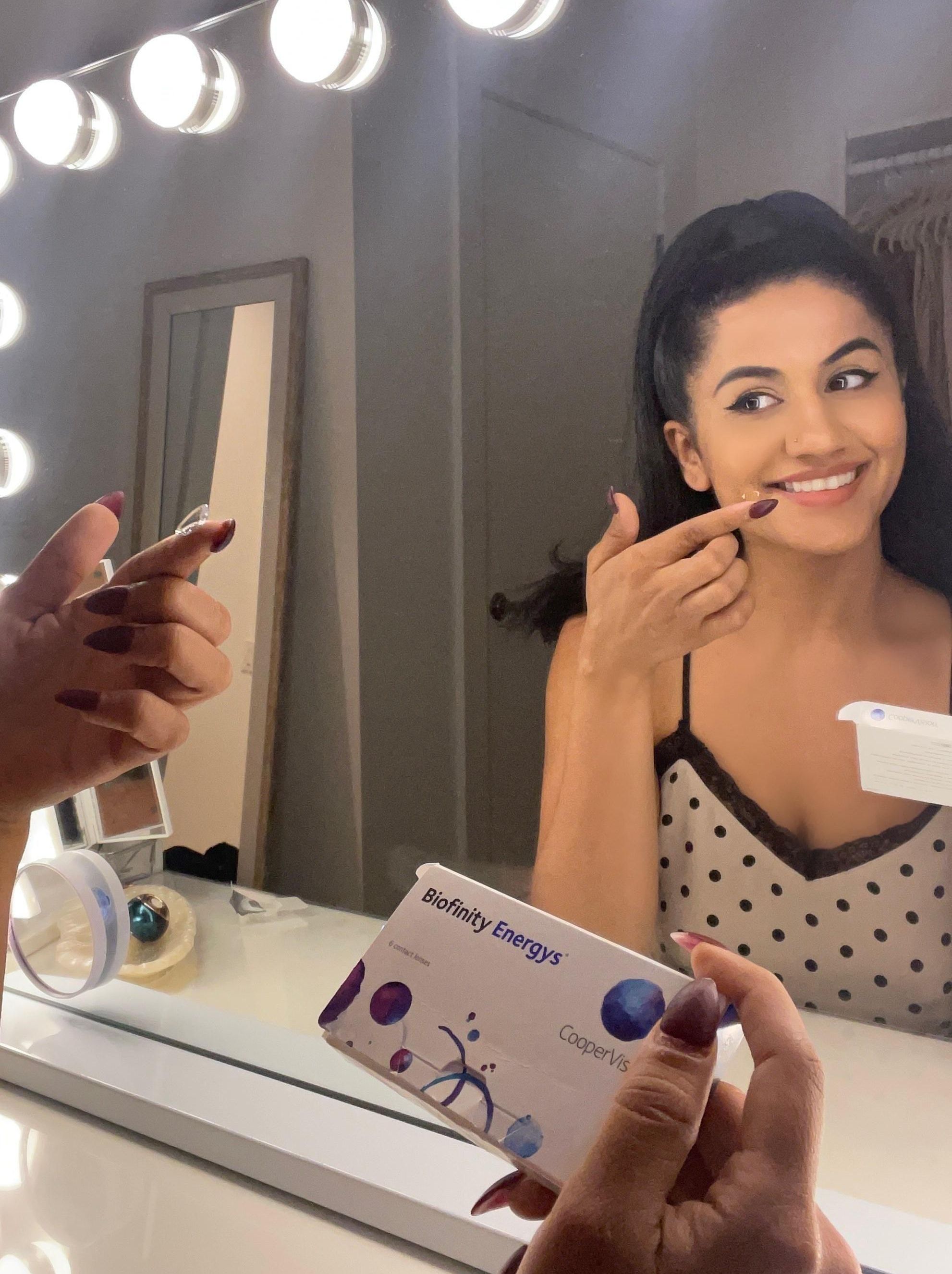Innovation is awesome, right? I mean, it gave us the internet!
However, there is always a price to pay for modernization, and in this case, it’s in the form of digital eye strain, a group of vision problems that can pop up after as little as two hours of looking at a screen. Some of the symptoms are tired and/or dry eyes, headaches, blurred vision, and neck and shoulder pain1. Ouch!
Eye strain from staring at devices is a widespread issue. Most people work, play, and maintain relationships through screens, which averages out to 6 hours and 35 minutes per day (and that’s in addition to work or school)! That translates to 46 hours and 5 minutes per week, or 2,402 hours and 55 minutes per year.2
With numbers like these, attention to eye health is more important now than ever; our dependence on technology certainly isn’t going anywhere. And just like innovation brought us technology, innovation also holds the key to combating the effects it has on our bodies. Here are some key suggestions from eye care professionals to help reduce common symptoms of digital eye strain. Spoiler alert: none of them involve wearing glasses!
Follow the 20-20-20 rule.
You can find some relief by taking a 20-20-20 break: every 20 minutes, look at something 20 feet away for 20 seconds. It’s easy to remember because we all want 20/20 vision, and it’s a good excuse to look out the window.
Adjust your workspace screen to be slightly below eye level and about an arm’s length away.
This simple tweak to your work area can really improve your posture, as well as the amount of strain on your eyes. A win-win!
Adjust the brightness of your device.
Brightness levels also play into how hard our eyes have to work. Our screen brightness should match our surroundings, especially during the evening hours.
Say hello to Biofinity Energys® contact lenses!
These contact lenses are specifically made to address eye dryness and tiredness caused by digital devices. Digital Zone Optics® lens design and Aquaform® Technology are two innovations that when combined help with the tiredness and dryness that can be caused by digital eye fatigue.
Additionally, Biofinity Energys® monthly replacement contact lenses are designed to help our eyes better adapt for a more comfortable wearing experience3. This part is tricky because contacts can be hard to adjust to, and trust me—no one wants what feels like gritty sandpaper in there. Comfort is key!
If you’re sick of wearing glasses all the time and feel ready to do something new, visit biofinityenergys.com to learn more and to get your free trial certificate.
References:
- https://www.ncbi.nlm.nih.gov/pmc/articles/PMC6020759/
- Asurion-sponsored survey by Market Research Firm Solidea Solutions conducted August 18-20, 2019 of 1,998 U.S. smartphone users, compared to an Asurion-sponsored survey conducted by market research company OnePoll between Sept. 11 – 19, 2017 of 2000 U.S. adults with a smartphone.
- Biofinityenergys.com
- A meditation teacher's 5 tips for breaking your screen addiction once ... ›
- A therapist and a filmmaker merge mental health with movie ... ›
- A 'smart' tattoo is just one new innovation that could help keep you ... ›
- Acuvue encourages Gen Z to take a social media break - Upworthy ›




